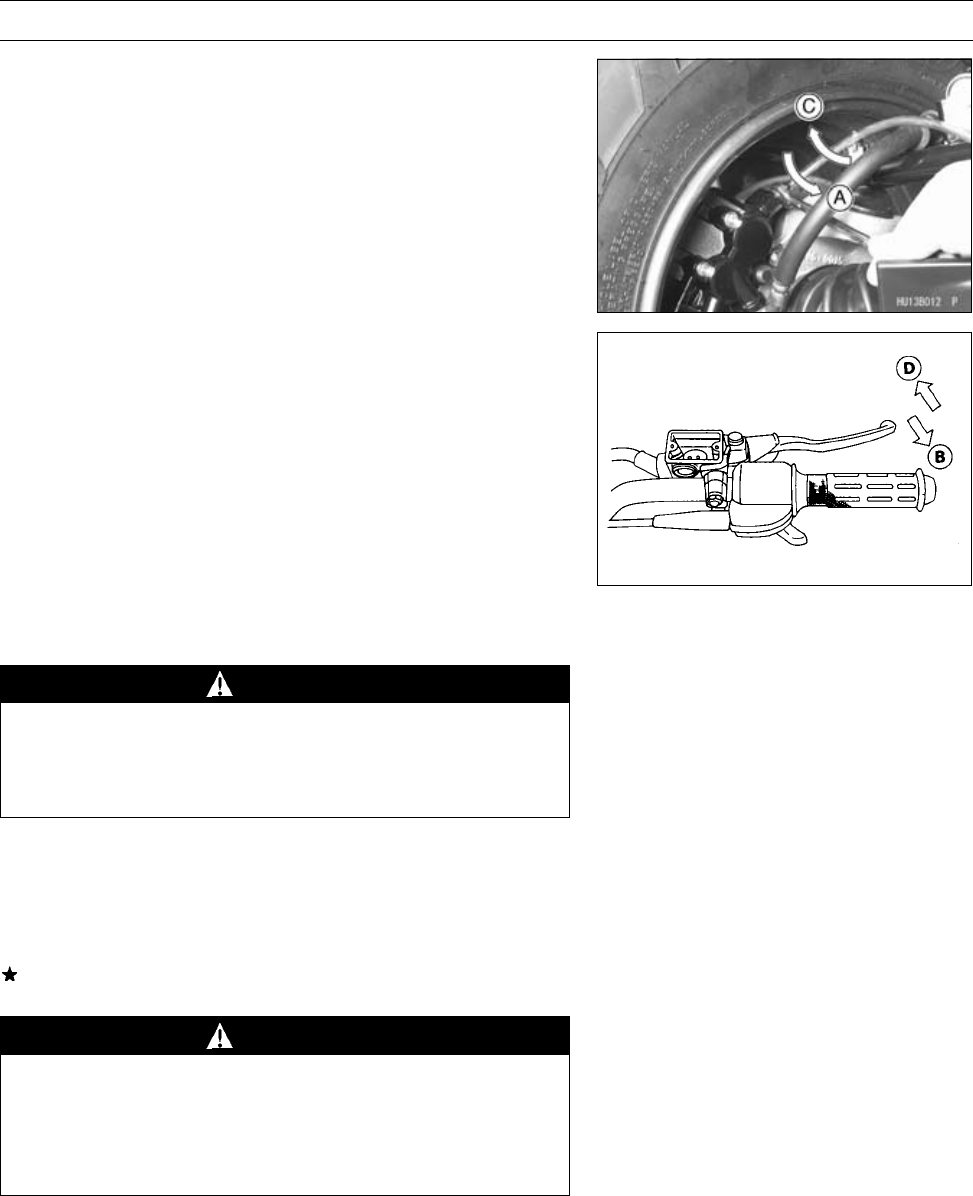
2-34 PERIODIC MAINTENANCE
Periodic Maintenance Procedures
Brake Flu id Change
•
Remove the reservoir cap and the rubber cap on the bleed
valve.
•
Attach a clear plastic hose to the bleed valve on the
caliper, and run the other end of the hose into a con-
tainer.
•
Fill the reservoir with new brake fluid.
•
Change the brake fluid as follows:
○
Open the bleed valve [A].
○
Apply the brake lever and hold it [B].
○
Close the bleed valve [C].
○
Release the brake lever [D].
•
Check the fluid level in the reservoir often, replenishing it
as necessary.
NOTE
○
If the f luid in the r eservoir runs completely out any time
during fluid changing, air w ill enter the line, and the sys-
tem must be bled.
•
Repeat this operation until fresh brake fluid comes out into
the plastic hose or the color of the fluid changes.
WARNING
Do not mix two brands of fluid. Change the brake
fluid in the brake line completely if the brake fluid
must be refilled but the type and brand of the brake
fluid that is already in the reservoir are not known.
•
Tighten:
Torque - Bleed Valves: 5.4 N·m (0.55 kgf·m, 48 in·lb)
•
Apply the brake lever forcefully for a few seconds, and
check for fluid leakage around the fittings.
If necessary, bleed the air from the brake line (see Brake
Line Air Bleeding section in Brakes chapter).
WARNING
If the brake lever has a soft or " spongy feeling"
when it is applied, there might be air in the brake
line or the brake m ay be defective. Since it is dan-
gerous to operate the vehicle under such condi-
tions, bleed the air from the brake line immediately.
Front Brake Master Cylinder Piston Assembly and
Dust Seal Replacement
•
Refer to the Master Cylinder section in the Brakes chap-
ter for Front Brake Master Cylinder Piston Assembly and
Dust Seal Replacement.
Front Brake Caliper Piston Seal and Dust Seal
Replacement
•
Refer to the Caliper section i n the Brakes chapter for Front
Brake Caliper Piston Seal and Dust Seal Replacement.


















